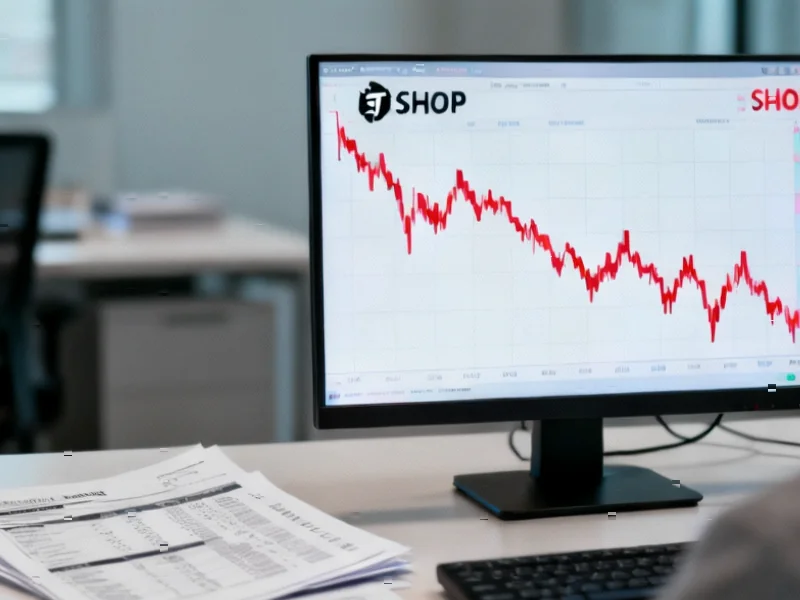According to Forbes, Shopify shares have surged 21% in the past month to $172.95, raising valuation concerns that could potentially drive the stock toward $121. The analysis indicates strong operational performance but warns of “Very High valuation” making the stock “Relatively Expensive” at current levels. This valuation tension deserves deeper examination beyond the surface numbers.
Table of Contents
Understanding Shopify’s Market Position
Shopify operates a global commerce platform that has fundamentally reshaped how small and medium businesses approach e-commerce. With a current market capitalization exceeding $224 billion, the company sits at an interesting crossroads between its pandemic-era growth trajectory and the current normalization of e-commerce trends. The platform’s strength lies in its ecosystem approach, offering everything from payment processing to shipping logistics, creating significant switching costs for merchants once embedded in their operations.
Critical Analysis of Valuation Concerns
The core issue isn’t Shopify’s business quality but rather the valuation metrics that have become increasingly stretched. What the analysis misses is the fundamental shift in market conditions. During 2020-2021, Shopify benefited from unprecedented e-commerce acceleration and near-zero interest rates that justified premium multiples. Today, we’re facing higher capital costs, increased competition from platforms like Amazon’s Buy with Prime, and margin compression as Shopify invests heavily in fulfillment infrastructure. The company’s international expansion, while promising, carries higher customer acquisition costs and lower average revenue per user compared to North American markets.
Competitive Landscape and Market Pressures
Shopify faces mounting pressure from multiple fronts that could challenge its growth trajectory. Enterprise competitors like Salesforce Commerce Cloud and Adobe Commerce are targeting larger merchants, while Square and Wix compete for smaller businesses. More concerning is Amazon’s increasing encroachment into independent merchant services through programs that bypass Shopify’s ecosystem entirely. The platform’s recent moves into enterprise solutions through Shopify Plus represent a necessary evolution but also bring the company into more competitive, lower-margin territory. Additionally, the broader commoditization of e-commerce infrastructure means pricing power could diminish over time.
Realistic Outlook and Investor Considerations
While the $121 price target represents significant downside, the more likely scenario involves extended consolidation rather than dramatic collapse. Shopify’s fundamental business remains healthy with strong merchant retention and growing gross merchandise volume. However, investors should temper expectations for the explosive growth rates of previous years. The company’s transition from pure software to physical fulfillment through its Shop Promise program introduces both opportunity and execution risk. Given the current market multiple compression across tech stocks, a more realistic near-term scenario might see Shopify trading in the $140-160 range as growth normalizes and the market recalibrates expectations. The key watchpoints will be merchant growth rates in international markets and the profitability of newer service offerings beyond core subscription revenue.



